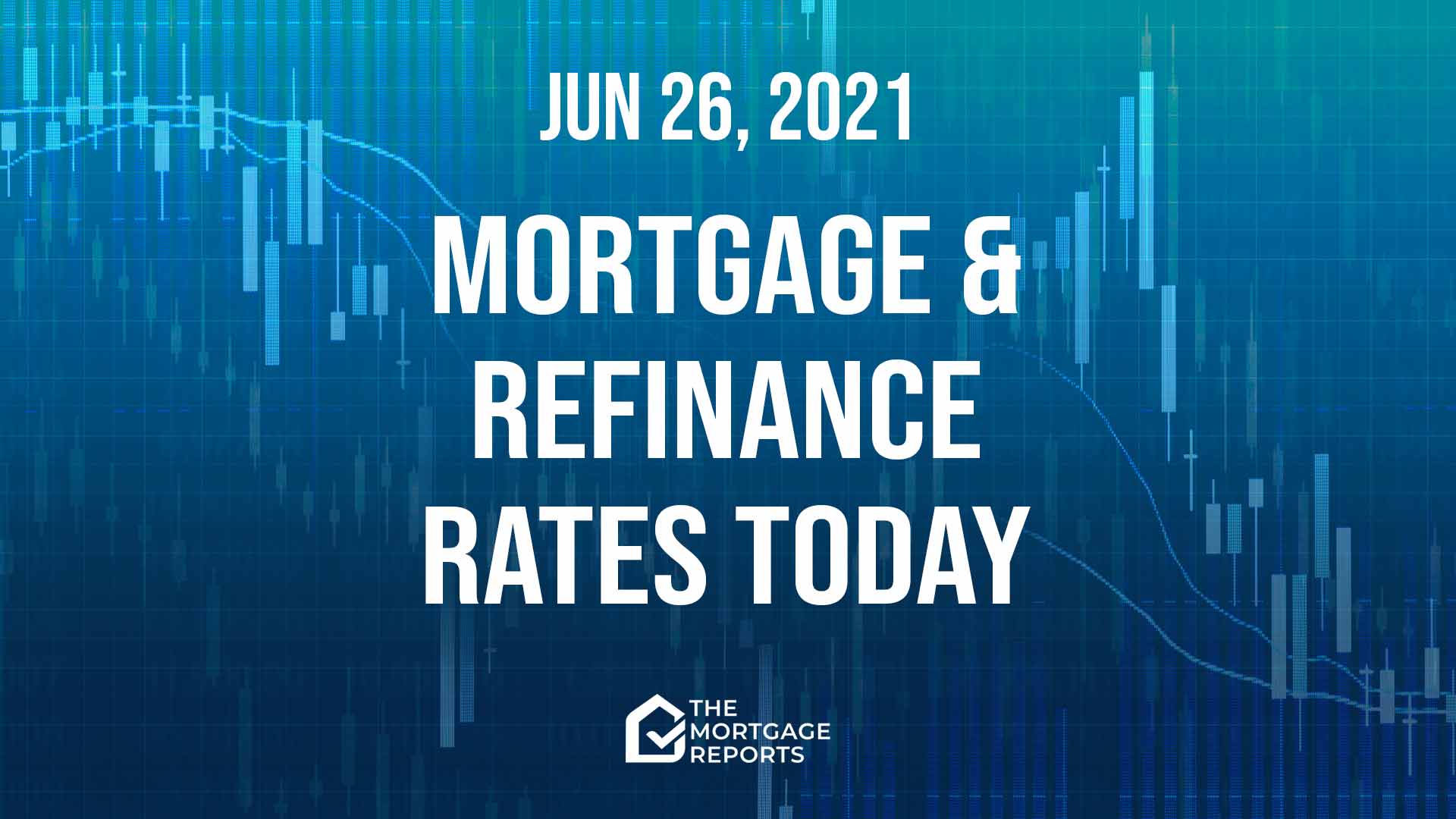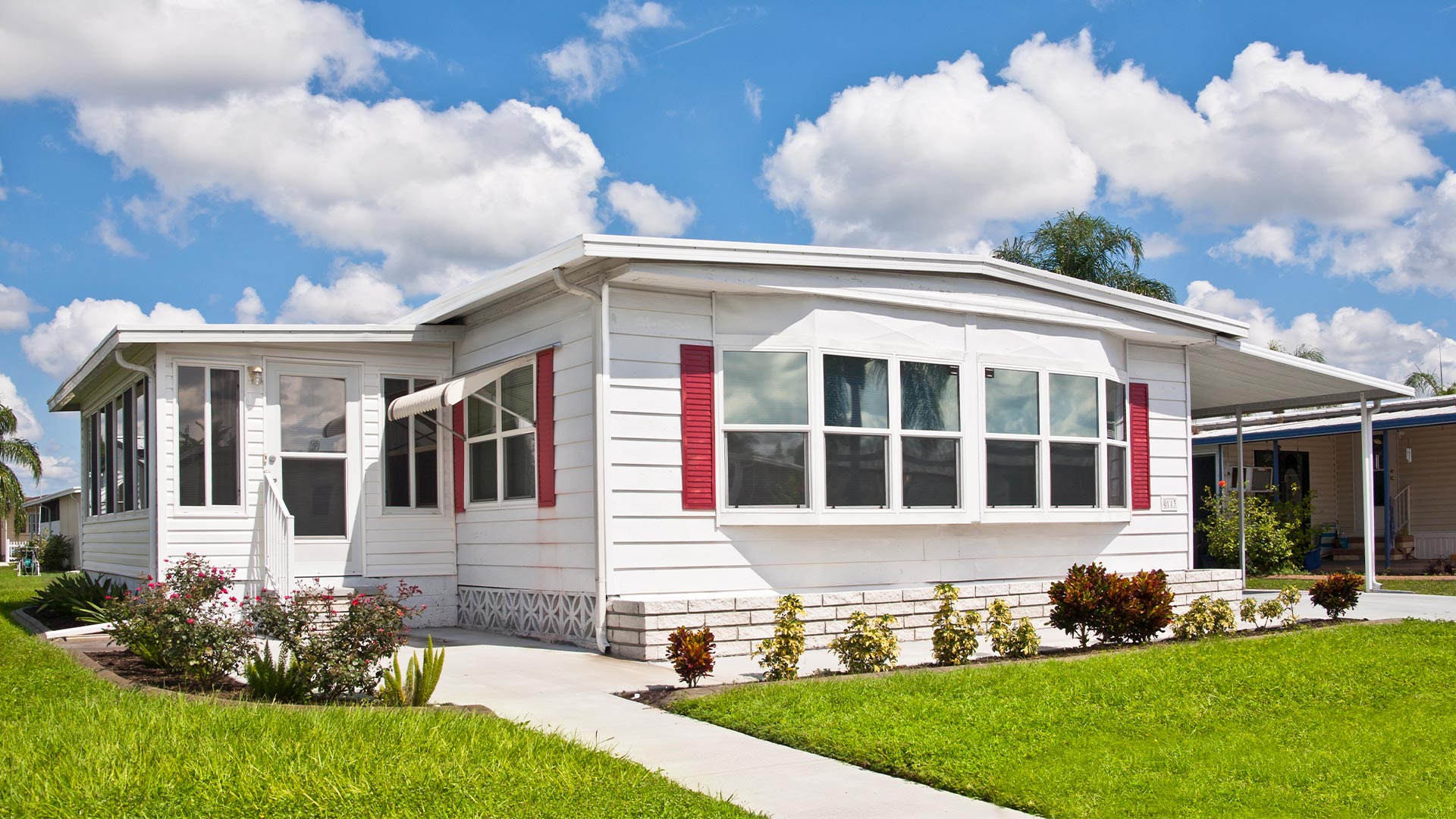
Today’s mortgage and refinance rates
Average mortgage rates were unchanged yesterday. So they’re just a little lower than they were a week ago. But way higher than two weeks ago.
I’m not expecting mortgage rates to move far next week. Overall, it’s looking likely that they will drift gently upward for some time to come. But there are bound to be good weeks within that period. Whether those rates are a little higher or lower next Saturday will make only a tiny difference to your monthly payments or closing costs.
Having said that, the monthly employment situation report is due out next Friday. And that’s more than capable of moving markets and mortgage rates. So, if that contains data that shock investors, my prediction for next week could be overtaken by events.
Find and lock a low rate (Jun 26th, 2021)Current mortgage and refinance rates
| Program | Mortgage Rate | APR* | Change |
|---|---|---|---|
| Conventional 30 year fixed | |||
| Conventional 30 year fixed | 2.936% | 2.936% | Unchanged |
| Conventional 15 year fixed | |||
| Conventional 15 year fixed | 2.255% | 2.255% | Unchanged |
| Conventional 20 year fixed | |||
| Conventional 20 year fixed | 2.75% | 2.75% | Unchanged |
| Conventional 10 year fixed | |||
| Conventional 10 year fixed | 1.956% | 2% | +0.02% |
| 30 year fixed FHA | |||
| 30 year fixed FHA | 2.809% | 3.466% | +0.03% |
| 15 year fixed FHA | |||
| 15 year fixed FHA | 2.62% | 3.222% | -0.04% |
| 5 year ARM FHA | |||
| 5 year ARM FHA | 2.5% | 3.22% | Unchanged |
| 30 year fixed VA | |||
| 30 year fixed VA | 2.375% | 2.547% | Unchanged |
| 15 year fixed VA | |||
| 15 year fixed VA | 2.25% | 2.571% | Unchanged |
| 5 year ARM VA | |||
| 5 year ARM VA | 2.5% | 2.399% | Unchanged |
| Rates are provided by our partner network, and may not reflect the market. Your rate might be different. Click here for a personalized rate quote. See our rate assumptions here. | |||
COVID-19 mortgage updates: Mortgage lenders are changing rates and rules due to COVID-19. To see the latest on how coronavirus could impact your home loan, click here.
Should you lock a mortgage rate today?
Yes, we’re having a better week for mortgage rates than we were seven days ago. But it hasn’t been as good as I’d hoped. Often there are worthwhile falls after sharp increases. But this one barely registered.
Meanwhile, those rates remain exceptionally low by historical standards. But there’s a near-consensus among those who follow them most closely that they’ll drift higher in the coming months. And I think there may be a sharp rise later in the year — conceivably as soon as late July.
So, my personal recommendations remain:
- LOCK if closing in 7 days
- LOCK if closing in 15 days
- LOCK if closing in 30 days
- LOCK if closing in 45 days
- LOCK if closing in 60 days
However, with so much uncertainty at the moment, your instincts could easily turn out to be as good as mine — or better. So be guided by your gut and your personal tolerance for risk.
What’s moving current mortgage rates
In yesterday’s daily article, I quoted a statement issued by Freddie Mac on Thursday. It said:
As the economy progresses and inflation remains elevated, we expect that rates will continue to gradually rise in the second half of the year.
I’ve been saying something similar for a long time. Booming economies tend to bring higher mortgage rates. And the current boom looks set to be the strongest since Ronald Reagan was in the Oval Office.
And others agree. Fannie Mae and the Mortgage Bankers Association (MBA) expect these rates to gradually rise as 2021 progresses. They both think they’ll average 3.0% during the current quarter, which is nearly over. And Fannie thinks they’ll end the year at 3.2%.
But the MBA reckons they’ll be up at 3.5% during the last quarter — and 3.7% during the first three months of 2022.
The Fed (inevitably)
I’m guessing that the MBA is anticipating (and Fannie is ignoring) a possible move by the Fed to slow its asset purchases, which currently include $40 billion a month on mortgage-backed securities. It’s that buying spree that’s currently keeping mortgage rates artificially low.
Pressure is growing on the Fed to begin to reduce its purchases soon. Yes, it’s possible it will announce its intention to do so late in July. But the smart money seems to think sometime between late August and December is more likely.
Of course, the smart money’s often wrong. But this time I suspect it’s right.
And when that Fed announcement happens, mortgage rates will likely rise fast. Because, the last time it said it would slowly reduce (“taper” in Fed-speak) asset purchases, in 2013, mortgage rates soared from 3.35% on May 2 that year to 4.51% on July 11, according to Freddie Mac’s weekly archive for 2013.
So, if reactions in markets are similar this time around, even the MBA might be understating the change.
Nothing’s inevitable
All this seems likely to me. But I have to acknowledge that nothing’s inevitable.
However, it would probably take some dreadful disaster (natural or otherwise) that strangles the economic recovery to stop this scenario from happening.
Of course, the timetable for events is always unpredictable. But it would take something massive — and relatively improbable — to stop it from happening at all.
Economic reports next week
Right now, markets are obsessed with two economic indicators: inflation and employment. This week, it’s employment’s turn in the spotlight. The official employment situation report, due Friday, is arguably the most important monthly data on the calendar. And it’s always capable of setting off fireworks.
But the others listed below are unlikely to cause much movement in markets unless they include shockingly good or bad data. Moreover, regular readers will know that markets have been ignoring most economic reports in recent months. So the effects of the following may be different from usual:
- Tuesday — April S&P CoreLogic Case-Shiller home price index. Plus June consumer confidence index
- Wednesday — June ADP employment report
- Thursday — June Institute for Supply Management (ISM) manufacturing index. And May construction spending. Plus weekly new claims for unemployment insurance to June 26
- Friday — June official employment situation report, comprising nonfarm payrolls, unemployment rate and average hourly earnings. Also May trade deficit plus factory orders
Once again, it’s Friday that’s the day to watch.
Find and lock a low rate (Jun 26th, 2021)
Mortgage interest rates forecast for next week
Assuming the employment situation report is unexceptional and nothing comes out of left field, we might be in for a period of calm. And my best guess is that mortgage rates may hold steady or close to steady next week.
Mortgage and refinance rates usually move in tandem. But note that refinance rates are currently a little higher than those for purchase mortgages. That gap’s likely to remain fairly constant as they change.
Meanwhile, a recent regulatory change has made most mortgages for investment properties and vacation homes more expensive.
How your mortgage interest rate is determined
Mortgage and refinance rates are generally determined by prices in a secondary market (similar to the stock or bond markets) where mortgage-backed securities are traded.
And that’s highly dependent on the economy. So mortgage rates tend to be high when things are going well and low when the economy’s in trouble.
Your part
But you play a big part in determining your own mortgage rate in five ways. You can affect it significantly by:
- Shopping around for your best mortgage rate — They vary widely from lender to lender
- Boosting your credit score — Even a small bump can make a big difference to your rate and payments
- Saving the biggest down payment you can — Lenders like you to have real skin in this game
- Keeping your other borrowing modest — The lower your other monthly commitments, the bigger the mortgage you can afford
- Choosing your mortgage carefully — Are you better off with a conventional, FHA, VA, USDA, jumbo or another loan?
Time spent getting these ducks in a row can see you winning lower rates.
Remember, it’s not just a mortgage rate
Be sure to count all your forthcoming homeownership costs when you’re working out how big a mortgage you can afford. So focus on your “PITI” That’s your Principal (pays down the amount you borrowed), Interest (the price of borrowing), (property) Taxes, and (homeowners) Insurance. Our mortgage calculator can help with these.
Depending on your type of mortgage and the size of your down payment, you may have to pay mortgage insurance, too. And that can easily run into three figures every month.
But there are other potential costs. So you’ll have to pay homeowners association dues if you choose to live somewhere with an HOA. And, wherever you live, you should expect repairs and maintenance costs. There’s no landlord to call when things go wrong!
Finally, you’ll find it hard to forget closing costs. You can see those reflected in the annual percentage rate (APR) you’ll be quoted. Because that effectively spreads them out over your loan’s term, making that higher than your straight mortgage rate.
But you may be able to get help with those closing costs your down payment, especially if you’re a first-time buyer. Read:
Down payment assistance programs in every state for 2021



